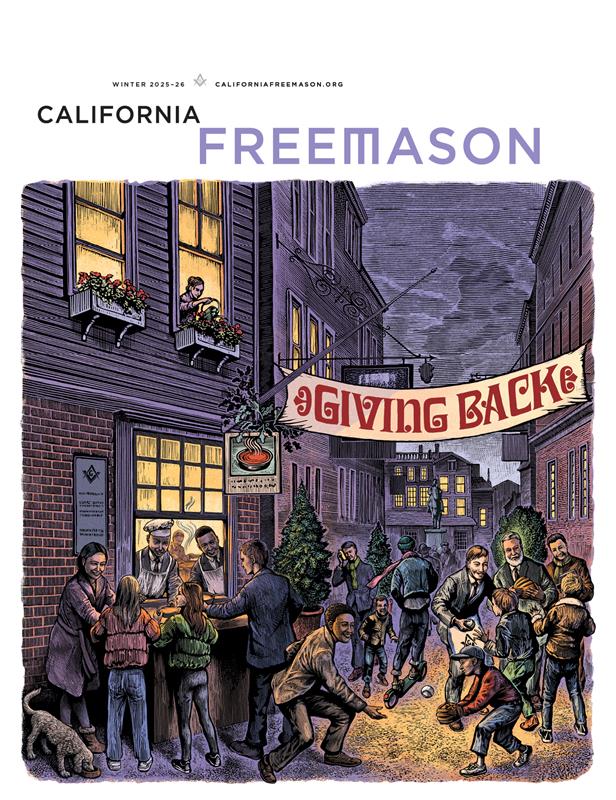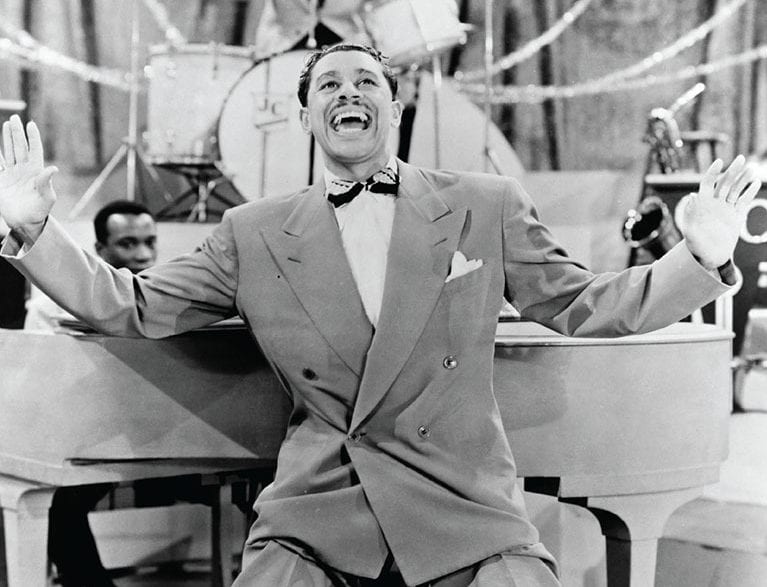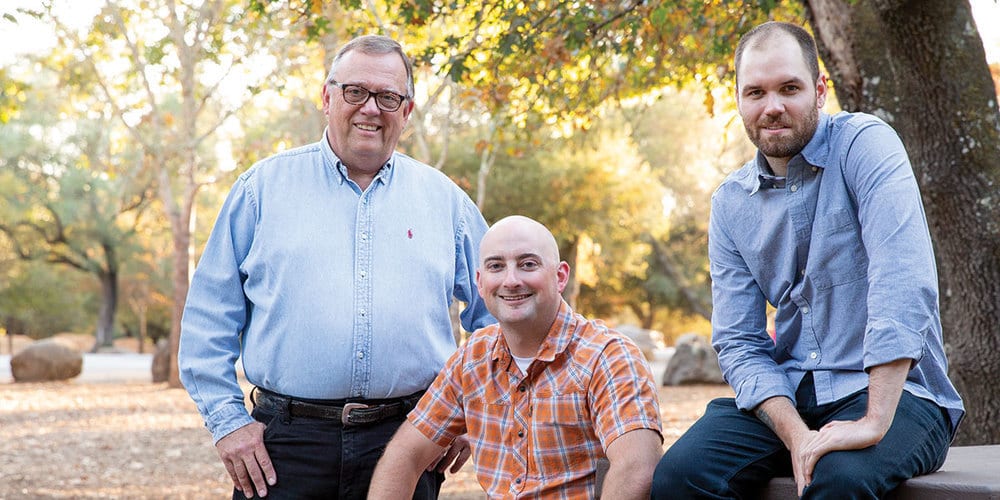
Leading with Beauty
THE SYMBOLISM OF MASONIC RODS
By Michelle Simone
Masonic rods, born by the stewards and deacons, are a hallmark attribute in every Masonic lodge. Their presence dates back to at least 1724, when they are said to have been carried in a grand lodge procession. Today, the rods continue to be infused with rich Masonic symbolism.
AN ANCIENT DESIGN
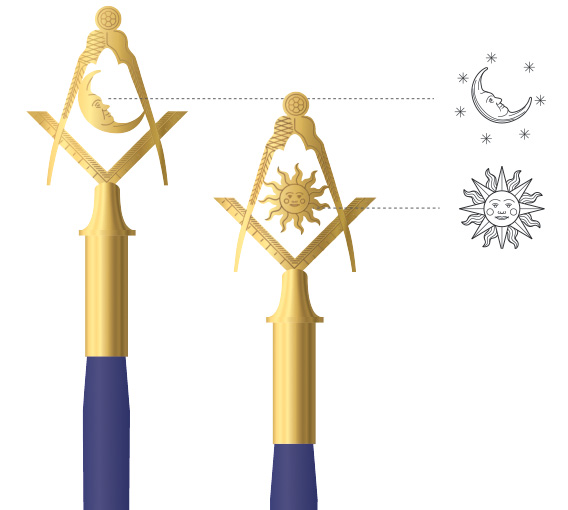 Masonic rods are thin poles that are approximately six feet long. According to one school of thought, this shape and length represents the asherah, wooden staffs carried by ancient attendants to the high priests. The term “asherah” comes from the ancient West Semitic goddess of the same name, who was said to have birthed the gods of dusk and dawn.
Masonic rods are thin poles that are approximately six feet long. According to one school of thought, this shape and length represents the asherah, wooden staffs carried by ancient attendants to the high priests. The term “asherah” comes from the ancient West Semitic goddess of the same name, who was said to have birthed the gods of dusk and dawn.
The herald who guided candidates through their initiation to the philosophies of the ancient mysteries was also known to carry an asherah. His was topped with a caduceus of Mercury – a winged staff wrapped with two opposing snakes. This symbol was said to ward off the spirits of evil. According to Grand Lecturer Jack Rose, some scholars attribute the metal tips of contemporary rods as homage to this ancient symbol. Another interpretation of this tip shape is that it imitates the thyrsus – a sacred staff carried by Bacchus, the Roman god of fertility, wine, and agriculture. The thyrsus was wrapped in leaves of ivy and topped with a pinecone. The pinecone carries its own rich symbolism – it is considered to be an ancient symbol of human enlightenment. In this school of thought, the rod tips represent this pinecone.
SYMBOLISM AND MEANING
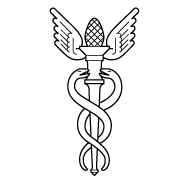 The word “deacon” derives from the Greek word for attendant. The junior and senior deacons’ rods, which are blue, symbolize friendship and benevolence. The white junior and senior stewards’ rods, represent purity and innocence.
The word “deacon” derives from the Greek word for attendant. The junior and senior deacons’ rods, which are blue, symbolize friendship and benevolence. The white junior and senior stewards’ rods, represent purity and innocence.
All rods are tipped with a silver or gold emblem. Until the late 18th century, the symbols of choice were the caduceus or pinecone. With a rise in Christian influence and negative views around symbols associated with paganism, the rod tips began to exemplify Biblical concepts, such as the crescent, sun, and cornucopia.
Today, when viewed together, these updated rod tips tell a story: The junior deacon’s rod tip, a “spilling water moon” (crescent moon that stands on its points) is combined with the sunshine atop the senior deacon’s rod to yield a fruitful harvest – symbolized in the cornucopias that adorn both stewards’ rods.
EMBLEMS OF MATERIAL CULTURE
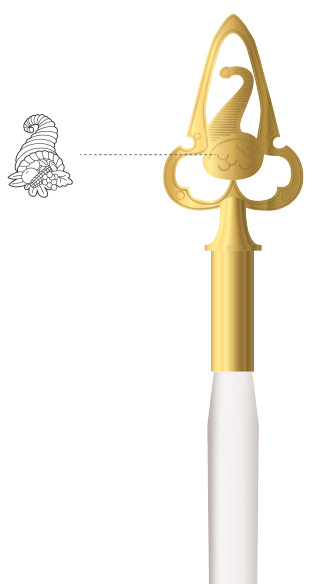 Contemporary Masonic rods play an important role in the material culture of their lodge and convey great meaning regarding those who carry them. The deacons stand in the east and west of the lodge, with rods tipped with the jewels of their office – the rising and setting sun. They are charged with serving as messengers of the worshipful master and ensuring all visitors have been properly screened by the tiler. Carrying their white rods, the stewards prepare and protect each candidate, assuring his quest towards light and goodness. Their jewels – bountiful cornucopias – also call to mind their duties to provide refreshment to the men of the lodge.
Contemporary Masonic rods play an important role in the material culture of their lodge and convey great meaning regarding those who carry them. The deacons stand in the east and west of the lodge, with rods tipped with the jewels of their office – the rising and setting sun. They are charged with serving as messengers of the worshipful master and ensuring all visitors have been properly screened by the tiler. Carrying their white rods, the stewards prepare and protect each candidate, assuring his quest towards light and goodness. Their jewels – bountiful cornucopias – also call to mind their duties to provide refreshment to the men of the lodge.
More from this issue:


The Legacy of Objects
One lodge’s near-casualty inspired a renewed interest in preserving Masonic artifacts, and revealed a treasure trove of California history.
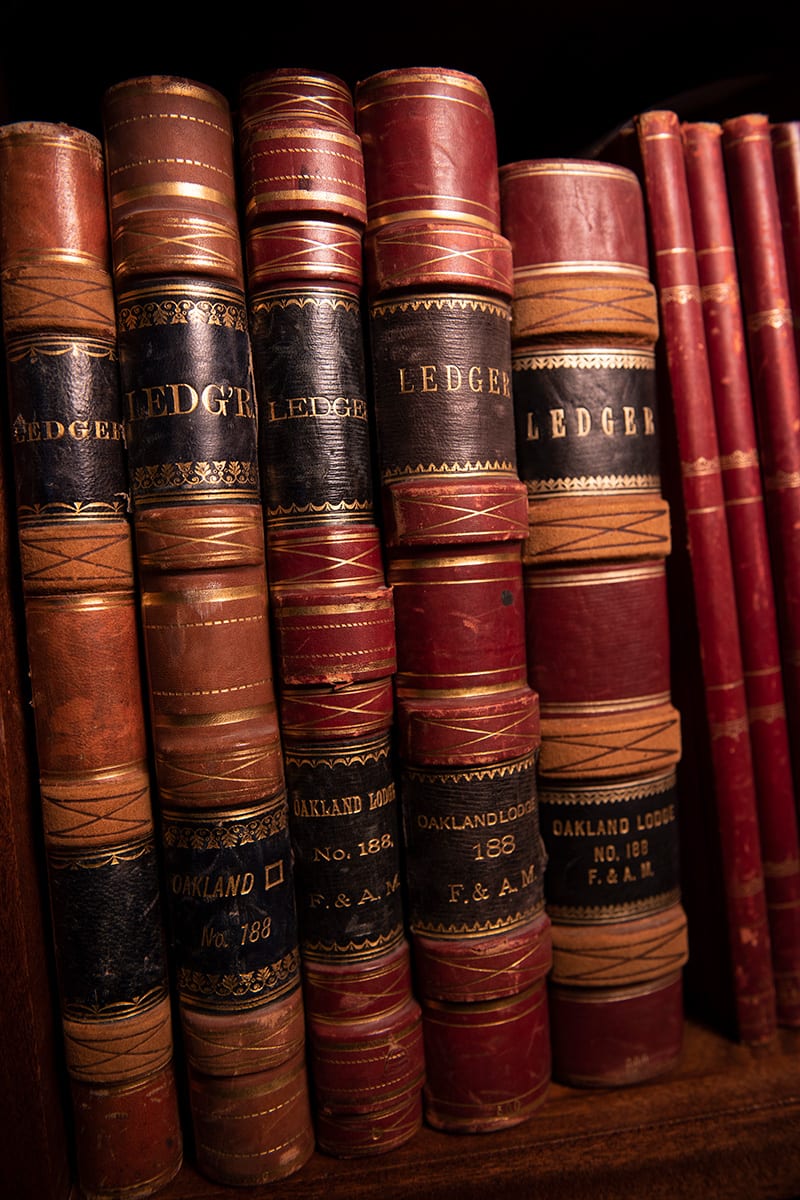
Tips For Managing Masonic Records
Lodges accumulate a mountain of records over the years, in the form of papers, books, artifacts, and photos. The sheer volume can get overwhelming.
Use these guidelines and tools to get rid of the clutter, and to take proper care of your lodge’s important records.
